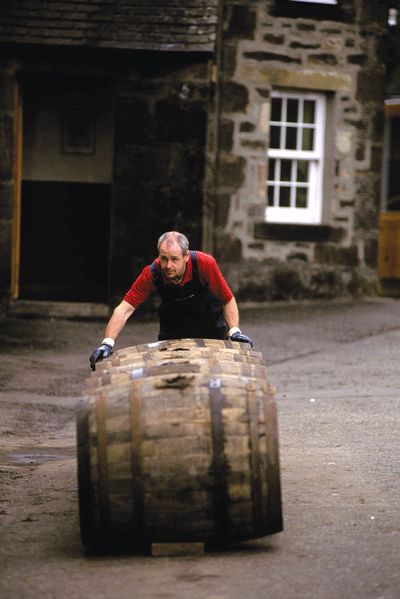
Haunting Spirits
It was love at first nose: the whisky smelled of butterscotch, trampled grass, and a hint of burning rope. But I was in love with a ghost or, more accurately, with the handiwork of a ghost: a freshly freed spirit from a long-gone whisky maker. This particular single malt had been made in 1975 by a distillery in the northeastern part of Scotland, called Banff, that closed in 1983.
Many of Scotland's most beloved distilleries met their demise in the 1980s, when overproduction and fluctuations in demand created the so-called whisky lake: too much malt and nobody to drink it. But several of those old distilleries produced very good single-malt scotch, and some of them left a felicitous legacy: orphaned casks that are now approaching a ripe and delicious age. The whiskies have names like Brora, Convalmore, and Port Ellen, and bottles cost anywhere from $100 to more than $600 each.
The value of these scotches lies not only in the fact that they have grown fine with age but also in the ephemeral experience of drinking them. To savor a whisky from a distillery like Banff, which stood in the coastal Highlands until its shuttering, or Rosebank, a lowland favorite mothballed on the banks of the Forth and Clyde Canal since 1993, is to get a taste of a rapidly receding past. With each swallow, the amount of that particular scotch left in the world is diminished forever.
Demand for such whiskies has begun to bring a few of these "ghost distilleries" back to life. Glenglassaugh, on Scotland's Moray coast, was revived in 2008 after 22 years of silence. Glengyle, fallow since 1925 in the fabled distilling locale of Campbeltown, has been resurrected and renamed Kilkerran. I'm confident that these sequels won't disappoint, but I'll take pleasure in being among the last on Earth to raise a dram to these departed spirits. To Pittyvaich! To Dallas Dhu! To Killyloch!
Keep Reading
Continue to Next Story










